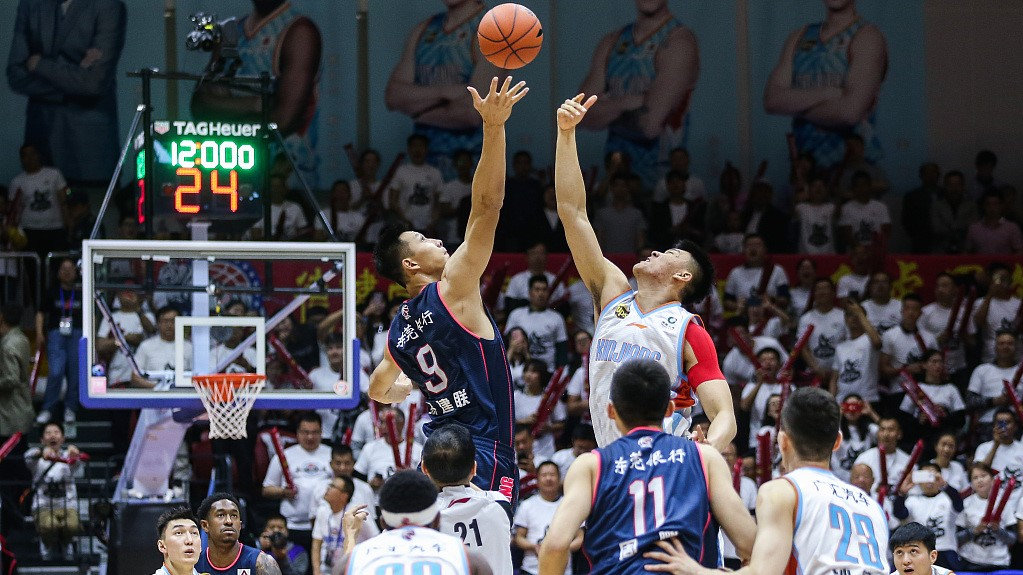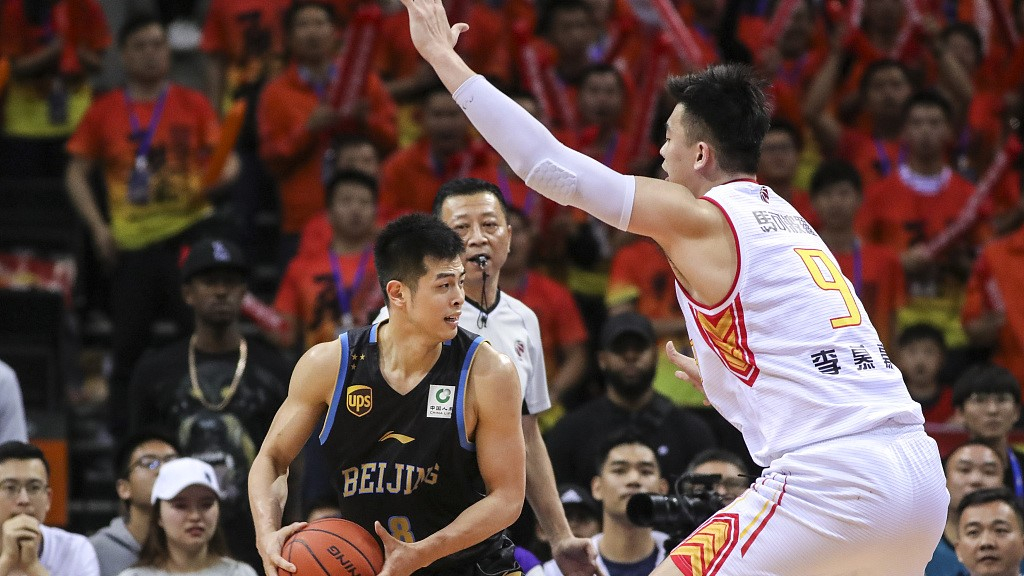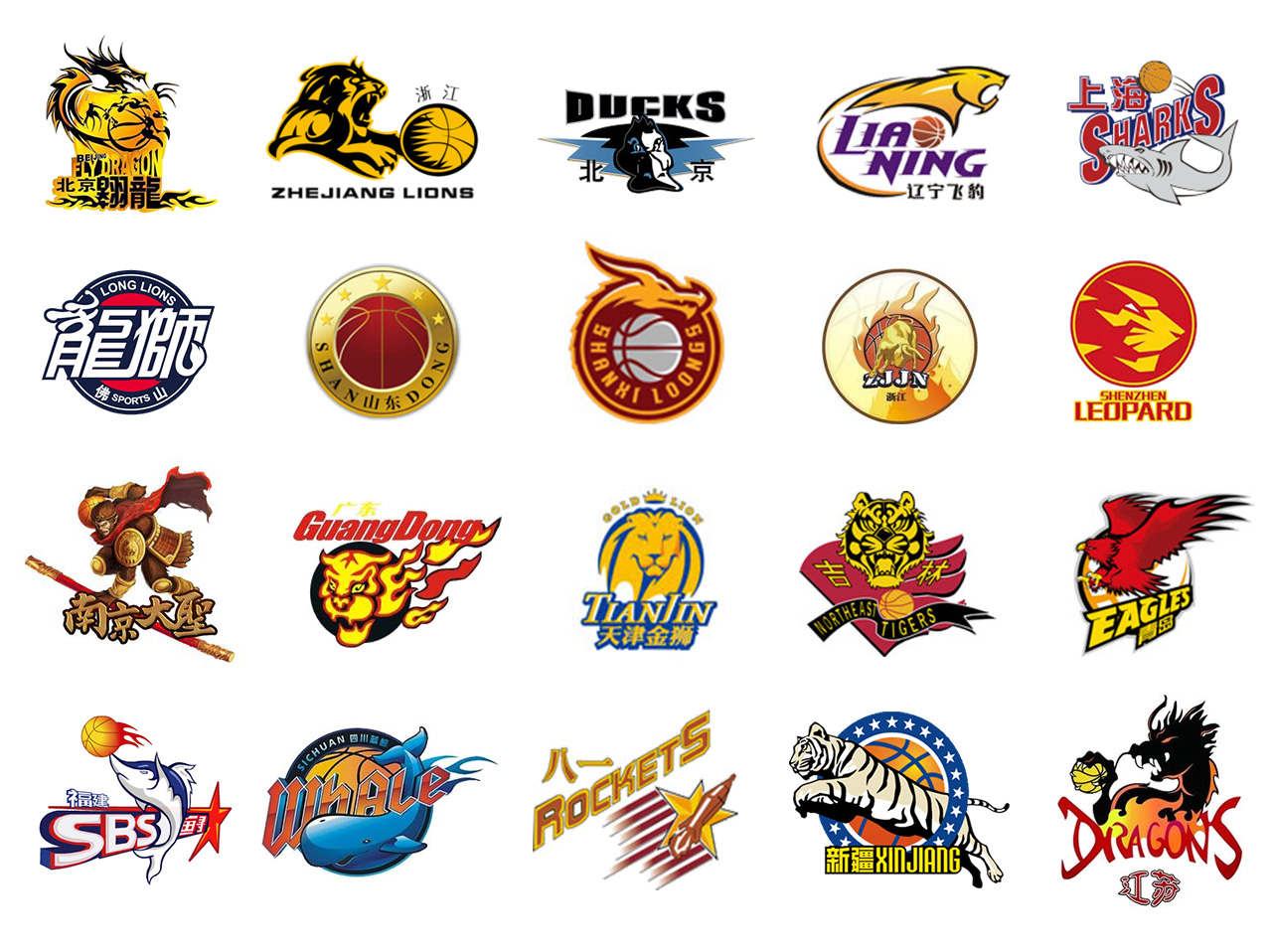
Basketball
20:59, 09-May-2019
5 changes coming in the 2019-20 CBA season
Li Xiang

As the 2018-19 CBA season came to an end, players went on vacation or began training sessions, and teams began making plans for the future. But the league isn't taking much time off because the next CBA season will bring multiple changes.
Longer and easier

Guo Ailun (#13) of the Liaoning Flying Leopards shoots in the playoff game against the Xinjiang Flying Tigers. /VCG Photo
Guo Ailun (#13) of the Liaoning Flying Leopards shoots in the playoff game against the Xinjiang Flying Tigers. /VCG Photo
The 2019-20 CBA season will start on October 26 and end on May 12. There will still be 46 games for each team but instead of playing three games a week, the teams will play eight games in three weeks next season, meaning that their burdens will lessen. Games will still happen between Tuesday and Sunday.
Though there won't be any World Cup window next season, if China cannot make the 2020 Tokyo Olympics via the 2019 FIBA Basketball World Cup, the country's national team will have to participate in the Olympic qualifiers in June 2020.
New groups, new competition

Game 5 between the Shenzhen Leopards (white) and the Beijing Ducks (blue) in the 2019 CBA playoffs. /VCG Photo
Game 5 between the Shenzhen Leopards (white) and the Beijing Ducks (blue) in the 2019 CBA playoffs. /VCG Photo
The 20 teams will be divided into four new groups based on their rankings and performance this season. Each will play four games (two home and two away) against each opponent from the same group and two games (one home and one away) against every opponent from different groups.
Group A: Guangdong Southern Tigers, Jiangsu Dragons, Shandong Golden Stars, Tianjin Gold Lions and Sichuan Blue Whales
Defending champion Guangdong is the strongest team, but they may need to be careful with Shandong if the Golden Stars have Ding Yanyuhang back and keep Donatas Motiejūnas and Ty Lawson.
Group B: Xinjiang Flying Tigers, Fujian Sturgeons, Jilin Northeast Tigers, Qingdao Eagles and Bayi Rockets
Xinjiang, runner-up during the 2018-19 CBA season, leads Group B and may introduce Zhou Qi to the lineup. However, Fujian, with China's top center Wang Zhelin, and Jilin, which has a strong record of defeating top teams, are not to be ignored.
Group C: Liaoning Flying Leopards, Zhejiang Lions, Zhejiang Golden Bulls, Shanxi Brave Dragons and Nanjing Monkey King
Having won 27 straight games in the regular season before losing to Xinjiang in the playoffs, Liaoning is desperate to make a comeback. Besides, the Zhejiang Derby between the Lions and the Golden Bulls also deserves attention.
Group D: Shenzhen Leopards, Beijing Ducks, Shanghai Sharks, Guangzhou Long-Lions and Beikong Fly Dragons
In the 2019 CBA playoffs, Shenzhen became the first team in league history to win a series after trailing 2-0. The losing party, Beijing, wants nothing but revenge.
Player contracts and transfer market

Zhou Qi, Chinese basketball player. /VCG Photo
Zhou Qi, Chinese basketball player. /VCG Photo
"Can Zhou Qi join a CBA team in the middle of an ongoing season?" became a popular question during last season. Though Yao Ming, president of the Chinese Basketball Association, answered "no" to that question, it revealed how incomplete the CBA's contract mechanism is.
The league presented the trial version of rules and regulations over player contracts, with provisions over term of contracts, guaranteed salary, contract-signing priority and other issues. Relevant amendments and official explanations will be released soon.
According to the current rules, one team can only have three maximum contracts. Moreover, if a player departs for a new employer, the new team must pay training compensation to the player's mother team and the amount is the average annual salary of the player's new contract (no bonus included). As multiple star players see their contracts come due this summer, some interesting stories will happen on the market.
Brand upgrade

Current logos of all 20 CBA teams. /CGTN Photo by Yin Yating
Current logos of all 20 CBA teams. /CGTN Photo by Yin Yating
The teams will have their brands and logos redesigned. Currently, most of the teams use animals in their names and they focus on tigers, lions, leopards and dragons – which lacks creativity and makes it difficult to tell the teams apart.
According to Yao Ming, the league will help all teams redesign their logos. The first nine teams will present their new images in late May and start to use them in the 2019-20 season. All 20 teams will have their new logos before the 2020-21 season.
Repaying society
Besides building new logos for the teams, the CBA also plans to invest more in public affairs, including youth basketball development, education programs and environmental protection campaigns. Besides establishing pubic welfare funds, the league will also spend the fines paid by the teams on this.

SITEMAP
Copyright © 2018 CGTN. Beijing ICP prepared NO.16065310-3
Copyright © 2018 CGTN. Beijing ICP prepared NO.16065310-3